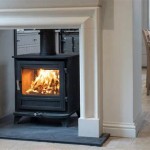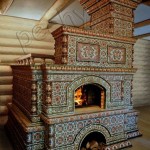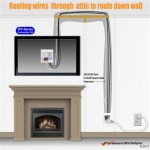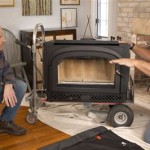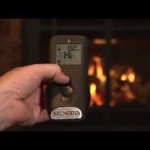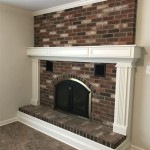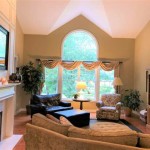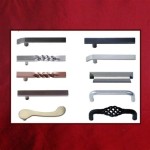```html
Fireplace Child Safety: Protecting Young Children from Fire Hazards
Fireplaces, while offering warmth and ambiance, pose significant safety risks to young children. Understanding these risks and implementing appropriate safety measures are crucial for preventing burns, injuries, and potential fatalities. This article outlines key considerations and practical steps for ensuring fireplace child safety.
Establishing a Safe Zone Around the Fireplace
One of the most effective ways to protect children from fireplace hazards is to establish a clear and well-defined safe zone around the fireplace itself. This zone should be free of toys, furniture, and other objects that could encourage a child to approach the fireplace. The size of the zone will depend on the type of fireplace and the age of the child, but a general guideline is to maintain a distance of at least three feet. This buffer helps to prevent accidental contact with hot surfaces or escaping embers.
A physical barrier, such as a fireplace screen or a safety gate, is highly recommended. These barriers provide a physical deterrent, preventing children from getting too close to the fire. The screen should be sturdy and made of a heat-resistant material. It should also fit snugly against the fireplace opening to prevent gaps through which a child could reach. Safety gates should be securely anchored to the wall to prevent them from being easily pushed over. Regular inspection of the screen or gate is important to ensure its continued effectiveness.
Furthermore, the floor surrounding the fireplace should be kept clear of flammable materials such as rugs or carpets. These materials can easily ignite if exposed to sparks or embers. Consider replacing flammable flooring with non-combustible materials such as tile or stone in the immediate vicinity of the fireplace.
Educating Children About Fire Safety
While physical barriers are important, educating children about the dangers of fire is equally essential. Age-appropriate explanations about the potential hazards of touching the fireplace, playing with fire, or throwing objects into the fire should be provided. Explain that the fireplace is hot and can cause painful burns. Instilling a healthy respect for fire from a young age can significantly reduce the risk of accidents.
Practical demonstrations of fire safety principles are also helpful. Show children what to do if their clothing catches fire (stop, drop, and roll) and how to safely exit the house in the event of a fire. Regularly practice fire drills to ensure that everyone in the family knows what to do in an emergency. The more familiar children are with fire safety procedures, the more likely they are to respond appropriately in a crisis.
It is also important to teach children not to play with matches or lighters. These items should be stored out of reach and sight, preferably in a locked cabinet. Explain to children that matches and lighters are tools for adults and should never be used without adult supervision.
Maintaining and Inspecting the Fireplace
Regular maintenance and inspection of the fireplace are crucial for ensuring its safe operation. Creosote, a flammable byproduct of burning wood, can build up in the chimney and flue, increasing the risk of a chimney fire. A professional chimney sweep should inspect and clean the chimney at least once a year, or more frequently if the fireplace is used often. This helps to remove creosote buildup and ensures that the chimney is properly functioning.
Inspect the fireplace for any signs of damage, such as cracks in the firebox or loose bricks. Repair any damage promptly to prevent further deterioration and potential hazards. Check the damper to ensure that it is working properly and that it can be fully opened and closed. A malfunctioning damper can restrict airflow and increase the risk of carbon monoxide poisoning.
When using the fireplace, always burn seasoned firewood. Seasoned firewood burns cleaner and produces less creosote than green or wet wood. Never burn trash, paper, or other materials in the fireplace, as these can release harmful chemicals into the air and increase the risk of a chimney fire. Ensure that the fire is completely extinguished before leaving the room or going to bed. Never leave a fire unattended, especially when children are present. A fire screen should always be in place when the fireplace is in use, even with constant supervision.
Install and maintain working smoke detectors and carbon monoxide detectors throughout the home. Test these detectors regularly to ensure that they are functioning properly. Change the batteries at least twice a year, or according to the manufacturer's instructions. Smoke detectors and carbon monoxide detectors can provide early warning of a fire or carbon monoxide leak, giving you and your family valuable time to escape.
```
3 Ways To Baby Proof A Fireplace Wikihow

How To Baby Proof Fireplace Important Checklist

Fireplace Child Pet Protection Firescreen Babyproof Co Za

Baby Proofing 101 How To Proof Your Fireplace

Child Safe Baby Proof Fireplace Proofing

Babyproof Your Hearth And Fireplace With These Simple Tips Tricks

Babysafetyfoam Com Baby Proofing Fireplace Hearth Guard Bumper Pad Safety Cushion Cover Protection

How To Childproof Your Fireplace Baby Proof

Childproofing A Fireplace Doctor Flue Se Michigan Nw Ohio

Cozy Fireplace Bench For Childproofing
Related Posts

